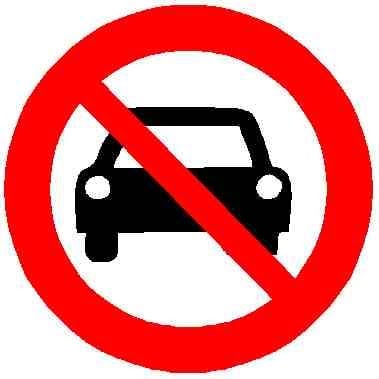It really fucking sucks that the auto industry lobbied the US government so goddamn hard in the 30’s - 70’s and got so much of this country built on car centric infrastructure while also systemically dismantling countless forms of public transit nationwide too. Most major cities and metropolitan areas used to have a pretty comprehensive streetcar system, yet where are they now? That’s right, manufacturers like GM bought majority stakes in those companies and then had their infrastructure dismantled all in the name of “progress.”
As far as I’m aware, the only city in the western world that truly kept its pre-automobile streetcar network was Melbourne, Australia. A result is it today has the largest tram network of any city in the world.
It hurts my soul to imagine how basically every city in North America had similar networks, but they were almost completely annihilated, save for small fragments in a small handful of cities.
Toronto, Canada has kept its streetcar network since they were horse drawn. Today the network is 83km long, or a third of Melbourne’s.
Technically Australia is east of the international date line so it’s not even really the western world.
Most of the people there are white so it counts as Western
This. I don’t even have a bus I could walk to oj under an hour’s walk. And the buses come every 30 min to an hour. It’s brutal.
deleted by creator
There was a woman who would beg for money on the last stretch of my commute home. Either she was on the bus or she must have been coming back from the other end of the line.
Every now and then she would start shrieking. Once she started she just… Didn’t stop. She would walk the length of the bus shrieking directly in people’s faces. This happened about a dozen times before I just started getting off the bus if I saw her. I would rather walk 30 minutes then have to put up with her.
I’m my country the transit system won’t ban anyone because it is considered excessive punishment for the extremely poor.
As a result, transit just sucks for everyone.
Behavior that is anti-social should be unacceptable. We’re so afraid of placing limits on anyone that the most unstable/unwell place limits on the rest of us.
In the case of the woman I mentioned, she’s also a victim. There’s no proper support for her. She needs help too.
That’s illegal in Denmark, i have seen people do this kind of things sometimes and everytime they are kicked off the transport at next stop. And then they jump on at the next transport and kicked off again, this behavior have forced the public transport in the big cities to have guards on board the trains all the times.
Yeah US public transport has issues. I want to be a train/bus/bike person and I am in Europe and Asia but can’t do it in most of the US.
Honestly, these days I feel like it’s hard to claim that driving is “safer”. It feels safer enclosed in your metal box, except for all the other high speed low-intelligence high-rage boxes driving around near you.
I can also respect the frustration of finding crazies on public transit, and won’t try to spin that as a positive - but to me, it speaks towards visibility of the world around you, and willingness to exist in it and change society when it’s broken. It’s like the lords in their manors that “cannot fathom consorting with all that plebeian filth”.
I’m biased. I’m a tall guy, and I’ve had an incident having to stare down a homeless guy that was spewing Asian hate to a poor Korean guy on the train. I’ll keep taking those trains, claim them for the reasonable people.
Yes, but context matters. Nobody is taking a train up the street to get groceries. And using a car (or a huge ass truck) for that is often overkill.
Bikes FTW!
I don’t understand this visualisation. Perhaps I’m lacking context. Anybody willing to do ELI5… maybe ELI15? What quantity is being compared and what are potential passengers?
The context is that they’re showing one metric among many and are hoping you’ll draw the conclusion they want: that cars are an inefficient way to travel. It’d be interesting to see distance and time metrics added. For example, while pedestrian capacity is pretty large, the distance travelled for any specific time period is short, so people aren’t walking somewhere 100 miles away.
Similarly, door-to-door travel time can vary a lot. Suburban commuter rail around here is fast, but you need to drive to the station (because suburbs are designed for cars), wait for a train, commute on the train, then find your way to your actual destination from the station you get off the train at, so that might include walking or public transit.
Obviously, any one of the options can make the most sense in a given situation, but the infographic isn’t trying to show that.
I agree the graphic alone isn’t super clear. I read it as the higher number being the potential capacity (such as in a particularly high-capacity system), and the lower number being the more typical capacity. Consider suburban rail, for instance. Some systems might have double-decker trains and more compact seating that allows for higher capacity, whereas some may have just single-decker trains. The double-decker system will have a higher capacity, whereas the single-decker might be more representative of what the “average” capacity of a suburban rail system might be, while the higher number might be more representative of the “potential” capacity of a suburban rail system when you really push it to its limit.
I’m struggling with this average vs potential. If I stand on a 3.5m wide sidewalk on average I’m going to see 15,000 people pass me by? And there is no room for potential improvement as the sidewalks are completely full on average? And how are we figuring cars can potentially be improved by 33%? Are all cars 3/4ths full already?
I’m very pro public transit, I’m just unclear what is being shown in this chart.
They’re showing capacity, i.e., a 3.5m sidewalk can move about 15k people per direction per hour. I’m guessing there’s leeway for cars depending on intersection types/design, speed, etc., whereas there is much less variation in average speed for pedestrians.
Average should be a measured real world quantity. A max theoretical value should never be average unless it’s literally always at the max… on average.
The wording on the chart isn’t the best, but I’m presuming they mean average capacity, not average ridership, because every city and every system will have its own factors that can impact the specific capacity of their transit modes. E.g., one system may have double-decker suburban rail vs another’s single-decker, or one system may have articulated buses vs another’s non-articulated. These differences would result in differing capacities, but the purpose of the chart is to show a ballpark number for what the typical capacity of a 3.5m corridor of each type would be, based on averaging system capacities in presumably many different cities.
Efficiency is not the objective. In fact, were all energy and materials used in making and powering cars from relatively renewable sources, it wouldn’t be a problem. I am aware they’re not. All else being equal, efficiency is a worthwhile goal. But the tradeoff for inefficiency here is the freedom to go where you want when you want.
There are places here in Europe, contrary to what some people in this community might claim, that simply cannot be accessed by train. Smaller villages and the like.
Access to a car is useful. Ownership might not be unless you live there. But cars have their place.
But cars have their place.
True. However with all the downsides of cars, they should be only the fallback if most other options don’t work. As it is, in many places, they are the highest priority that everything is planned around.
Yes. Agreed.
I don’t own a car and don’t want to, but I do rent one once in a while.
Unfortunately, I’m immunocompromised, so most of these options are too high risk.
There is always exceptions and in some areas, you have to have some cars. But removing most of the cars and replacing most of the 8 lanes of traffic with alternatives would be more than enough.
I wasn’t even disagreeing. Not sure why I’m being argued against.
People don’t drive cars because they think they’re efficient in absolute numbers. They drive cars, because cars are way more comfortable and faster than anything else in everyday life.
They’re only faster because transit infrastructure is built exclusively for cars at the expense of everyone else, including car drivers. Driving during rush hour sucks, but many people don’t have a choice.
The only thing I wish is that we had more accessible and safe single-seat vehicles. I bring 3 empty seats with me to work every day. I would be more than happy to have a cheap, efficient single seat vehicle for commuting if it was safe. I’m not going to ride a motorcycle 25 miles each way every day in the Florida heat and rain. I’m certainly not going to share the road with the maniacs we have here on a motorcycle.
I’m certainly not going to share the road with the maniacs we have here on a motorcycle.
In other words, it isn’t that biking or motorcycling or walking or whatever isn’t safe, it’s that the presence of cars makes everything unsafe (including the cars themselves).
Similarly, bike lanes etc. are car infrastructure, not bike infrastructure, because in the absence of cars cyclists would have no problems using the normal lanes. (Remember that the next time some dipshit complains about spending on bike lanes or cyclists not paying their “fair share.”)
Pretty much every argument drivers have against other transportation modes is rooted in projection.
Ain’t nothing comfortable about being in an environment where one wrong move will end your life
Not to mention how every time you drive a km, you kill a statistical fraction of a person. How do people do that fucking calculus? How many micromorts are you willing to inflict on others just to get some OJ from the store? People DON’T do the fucking calculus, that’s how. They just push it from their minds, like they have been conditioned to by the religion of the automobile ever since birth.
Where is the plane?
Gonna use some of that suburban rail to travel dooway-to-doorway. Oh wait. No, you can’t. It is almost as if having options for different needs is important. Instead let’s use overly simplistic explanations for a rather complicated problem.
deleted by creator
Hey all you people that live in that city, some troll online wants to take away all your choices. Yeah, I know that’s ridiculous and beyond arrogant and ignorant of them, but then again that is why they are a troll.
deleted by creator
Mods are an incredibly inefficient way to moderate people.






